Rustic home decor ideas have gained significant popularity among homeowners seeking a unique and timeless aesthetic for their living spaces. This distinctive style, often blending natural elements with vintage finds, offers a cozy and inviting atmosphere that feels both familiar and refreshingly different. Whether you’re aiming to transform your entire home or simply enhance a particular area, rustic decor provides endless opportunities to infuse character and charm. From weathered wood accents to antique-inspired pieces, rustic home decor ideas can seamlessly integrate into various settings, creating a harmonious balance between sophistication and simplicity. In this guide, we’ll explore how to achieve a rustic look, differentiate it from farmhouse styles, and discover modern twists that elevate traditional rustic designs. Get ready to unlock the secrets of crafting a space that feels authentically rural yet elegantly contemporary.
Key Takeaways
– Modern rustic home decor seamlessly blends contemporary minimalism with rustic elements to create a sophisticated yet cozy retreat.
– Prioritize natural materials like wood, stone, and metal for an organic, earthy feel.
– Opt for an earthy color palette with warm neutrals and green tones to cultivate a calming ambiance.
– Incorporate vintage and industrial elements to add texture and historical depth.
– Use pendant lights or Edison bulbs for warm, ambient lighting that complements the rustic theme.
– Focus on modern, low-slung furniture for comfort and clean lines.
– Introduce textural contrast with pillows, throws, and natural decor for a welcoming feel.
– Feature nature-inspired artwork and decorative elements like woven baskets or plants.
– Use bold accents like deep red or mustard yellow to add vibrancy.
– Incorporate subtle patterns and handcrafted rugs for visual interest.
– Choose natural flooring options and dramatic ceiling features like exposed beams.
– Add personal touches with family heirlooms and greenery for a unique, lived-in space.
– Thoughtfully mix rustic and modern elements to achieve a balanced, eclectic style.
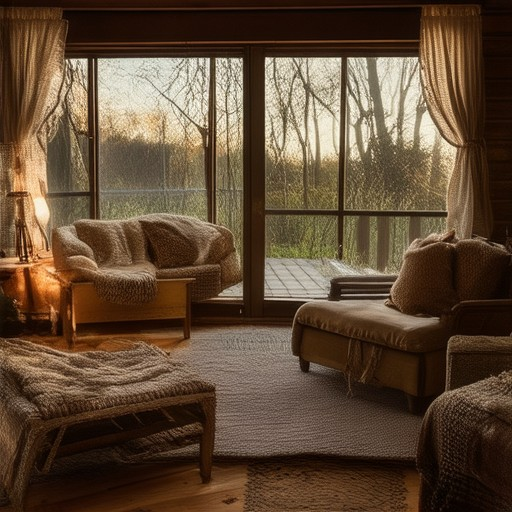
How to Make Your House Look Rustic
To achieve a rustic look in your house, focus on incorporating natural elements, weathered finishes, and unique textures. Here’s a step-by-step guide:
- Exterior Updates
- Add wooden shutters to emphasize the classic rustic charm.
- Consider a stone path or gravel driveway for a natural, weathered appearance.
- Front Door Appeal
- Opt for a welcoming front door with a weathered finish or unique design, such as stained glass or an iron doorbell.
- Garden Area Enhancements
- Incorporate natural elements like wildflowers, herbs, or a small vegetable garden.
- Add a stone or gravel pathway through your garden for a rustic touch.
- Wall Treatments
- Use a dark stain to enhance the natural wood grain or apply a whitewash technique for a distressed look.
- Consider adding texture with nails, gouging, or using a wire brush to mimic weathered wood.
- Lighting Fixtures
- Install lanterns or pendant lights with fabric shades for a cozy, rustic ambiance.
- Flooring and Rugs
- Use natural fiber rugs like jute or sisal for a textured floor covering.
- Furniture Selection
- Opt for reclaimed wood furniture or pieces with unique textures and imperfections.
- Add vintage finds, antique decor, or handmade items to enhance the rustic theme.
- Accessorizing
- Use woven baskets, clay pots, or iron accents to add character and functionality.
- Landscape Features
- Soften hard edges with curved walkways or add a small bench for a relaxing spot.
- Seasonal Touches
- In fall, place pumpkins or cornstalks near your doorway.
- In winter, hang string lights or place lanterns outside for a warm glow.
- Color Scheme
- Stick to neutral tones with pops of earthy colors like terracotta or olive green.
- Use paint colors that mimic weathered wood or stone.
- Textural Elements
- Incorporate brick or stone walls indoors for a natural, rugged feel.
By combining these elements, you can create a cohesive rustic aesthetic that feels inviting and authentically country.
What is the difference between rustic and farmhouse decor?
Rustic and farmhouse decor are two distinct styles that share common elements but exhibit unique characteristics. Here’s a breakdown of their key differences:
- Color Palette: – Rustic: Earthy tones, muted hues, and weathered finishes dominate rustic decor. Colors like olive green, deep browns, and terracotta are common. – Farmhouse: Neutral and soft tones, such as white, beige, gray, and light blues, are characteristic of farmhouse style. The focus is on creating a clean, crisp environment.
- Furniture Style: – Rustic: Rough-hewn, weathered, and antique furniture is typical. Pieces may show signs of wear, with a focus on natural imperfections. – Farmhouse: Simple, sturdy, and functional furniture is favored. Tables, chairs, and benches often have a minimalist design with clean lines and a focus on practicality.
- Material Usage: – Rustic: Natural materials like wood, stone, and metal are prominent. Textures play a significant role in creating depth and contrast. – Farmhouse: Smooth, polished materials are often used, with an emphasis on simplicity and minimalism. Soft fabrics like linen and cotton are commonly incorporated.
- Overall Ambiance: – Rustic: The style evokes a sense of rough elegance and nostalgia, often associated with rural or countryside settings. – Farmhouse: The decor creates a comfortable, welcoming, and timeless atmosphere, often inspired by classic farmhouses and country living.
Both styles emphasize natural elements and textures, but their execution differs significantly. Rustic decor leans toward the organic and imperfect, while farmhouse decor focuses on simplicity and functionality. Regardless of personal preference, these styles continue to be popular choices for creating inviting and unique living spaces.
For more inspiration and tips on incorporating these styles into your home, visit Peck and Gartner today!
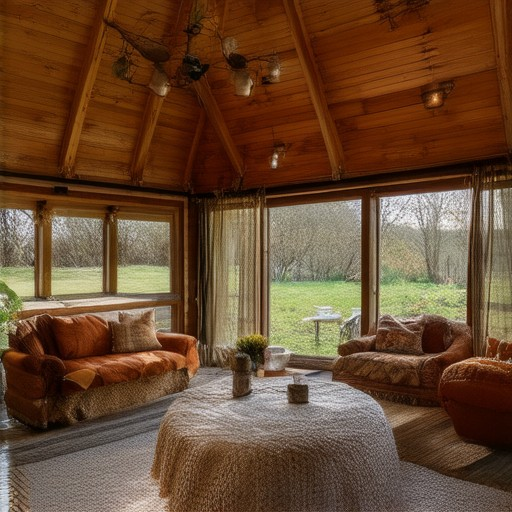
Rustic Elegance: Elevating Rustic Style to Sophistication
Rustic design, often characterized by natural materials and a laid-back vibe, can be effortlessly elevated to sophistication with thoughtful design choices. By blending the organic beauty of rustic elements with refined details, you can create a space that feels both inviting and luxurious.
Key Elements of Rustic Elegance
- Natural Materials: Embrace wood, stone, and raw textures, but opt for higher-quality finishes to lend an air of sophistication. Consider polished wood floors or stone tiles that exude durability and timeless appeal.
- Earnest Color Palette: Stick to earthy tones like muted greens, warm browns, and soft grays, but introduce pops of rich colors like deep red or charcoal to add depth and a touch of opulence.
- Lighting: Ambient lighting is essential. Statement lighting fixtures, such as ornate chandeliers or delicate lanterns, can transform a rustic space into a haven of elegance.
- Furniture Selection: Mix rustic wooden furniture with sleek, modern accents. Glass tabletops or minimalist designs can add refinement without compromising the rustic charm.
- Art and Decor: Incorporate artwork that reflects the natural world but with a sophisticated edge. Consider pieces that tell a story or evoke a sense of wonder.
Accessorizing for Elegance
- Layer Textures: Use layered textures through throws, rugs, and curtains to create depth and warmth. Velvet drapes or plush throws can add a luxurious feel.
- Statement Pieces: Introduce statement pieces like a vintage mirror, a beautifully carved console table, or a collection of unique vases. These items act as focal points and add sophistication.
- Greenery: Incorporate plants and flowers to bring life into the space. Well-maintained greenery can complement the natural elements while adding freshness to the room.
- Candlelight and Scents: Use elegant candlelight arrangements with high-quality soy candles or essential oils. Sophisticated scents can enhance the ambiance and add a touch of refinement.
Final Touches
- Details Matter: Pay attention to hardware, hinges, and handles. Choose pieces that align with the overall aesthetic, whether they are polished or weathered for a rustic touch.
- Balance is Key: Ensure that the space feels balanced. Avoid clutter and stick to a cohesive layout that allows each element to shine in its own right.
- Personalized Touches: Add personal touches that reflect your personality, whether it’s through custom-made decor or meaningful items that have a story to tell.
By thoughtfully combining rustic elements with refined details, you can create a space that feels both welcoming and sophisticated. Rustic elegance is not just about simplicity—it’s about harmony and the artful blend of contrasting textures and details.
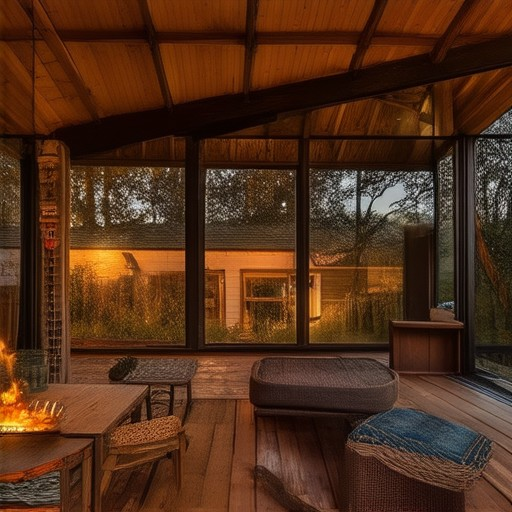
Modern Rustic Interior Design Style
Modern rustic interior design is a style that seamlessly blends contemporary minimalism with the warmth and charm of rustic elements. This aesthetic appeals to those who want a sophisticated yet relaxed living space that feels grounded and inviting.
Key Characteristics
- Natural Materials: Emphasis on raw, untreated materials like wood, stone, and metal, which bring an organic feel to the space.
- Earthy Color Palette: Warm, neutral tones such as beige, brown, gray, and green dominate, creating a calming and nature-inspired ambiance.
- Vintage and Industrial Elements: Incorporation of antique furniture, distressed finishes, and industrial-style pieces adds texture and history to the room.
- Lighting: Pendant lights, lanterns, or Edison bulbs often complement the rustic theme, providing soft, ambient lighting.
Furniture Placement and Styling
- Comfort and Functionality: Modern rustic furniture prioritizes comfort while maintaining a sleek, clean profile. Sofas, armchairs, and coffee tables are typically low-slung or have simple lines.
- Textural Contrast: Using pillows, blankets, and throws to soften hard surfaces and introduce a cozy element without overwhelming the space.
Art and Decor
- Natural-Inspired Artwork: Pieces that reflect the beauty of nature, such as landscapes or still lifes featuring organic forms, are ideal.
- Decorative Elements: Adding items like woven baskets, ceramic vases, or plants can further enhance the rustic feel.
Color Scheme
- Neutral Base: A foundation of muted tones ensures the focal point remains on the materials and textures.
- Warm Accents: Bold colors like deep red, mustard yellow, or olive green can be introduced as statement pieces or accents to add vibrancy.
Patterning and Texture
- Subtle Patterns: Geometric or floral patterns in textiles, tiles, or wallpaper can add visual interest without competing with the natural elements.
- Rug Choices: A handcrafted rug or one with a natural pattern can tie the room together while adding warmth underfoot.
Flooring and Ceilings
- Natural Flooring: Wood, stone, or concrete floors are popular choices that align with the rustic theme.
- Ceiling Treatment: Exposed wooden beams, vaulted ceilings, or sloped ceilings can add drama and height to the space.
Accessories
- Personal Touches: Incorporate family heirlooms, travel souvenirs, or artwork that has sentimental value to personalize the space.
- Greenery: Plants and greenery can act as natural decor, bringing life and freshness into the room.
Mixing Modern and Rustic Styles
- Balance: Combine clean, minimalist lines with rough, textured elements to create a harmonious look.
- Layering: Use layers of lighting, textures, and colors to create depth and interest within the space.
Modern rustic interior design is perfect for those who appreciate the beauty of the natural world and desire a lived-in, comfortable space that feels like a retreat from the outside world.
Modern Rustic Color Palette
Modern rustic style combines timeless elegance with contemporary simplicity, and its color palette reflects this blend. Here’s an overview of the colors that define modern rustic aesthetics:
- Earthy Neutrals: Muted greens, warm browns, and light beiges are foundational to a rustic look. These colors evoke a sense of comfort and grounding, making spaces feel inviting and calming.
- Cool Blues: Soft blues and blue-grays add a cooling effect, balancing the warmth of earthy tones. They can range from pale periwinkle to deepernavy for a more sophisticated vibe.
- Warm Accents: Rich, deep chocolates and warm grays bring dimension and depth to the palette, acting as focal points while maintaining a cohesive look.
- Green Influences: Sage greens and olive greens add a natural element, while also complementing wood tones and metallic accents.
- Subtle Pops of Color: Incorporate soft pinks, mustards, or teals for a touch of vibrancy without overwhelming the space.
For a truly modern twist, consider pairing these colors with minimalist furniture, natural textures like wood and stone, and plenty of lighting to create a balanced, inviting atmosphere.
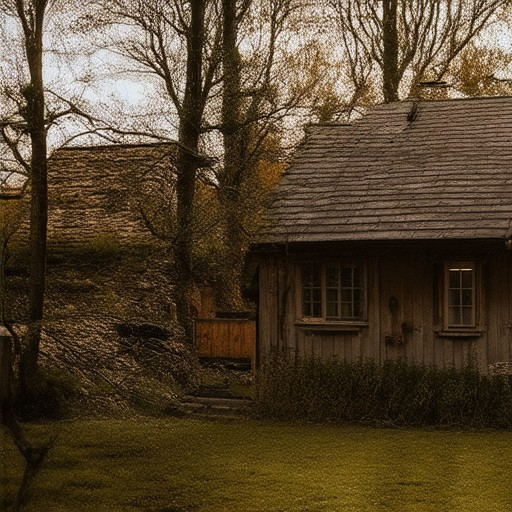
How to Mix Rustic and Modern Decor
Mixing rustic and modern decor can create a unique, eclectic style that blends the warmth of natural elements with sleek, contemporary furnishings. Here’s how to effectively combine these two aesthetics:
- Color Scheme:** – Opt for a neutral base using earthy tones like beige, light gray, or soft brown to harmonize both styles. – Introduce accent colors such as deep greens, muted oranges, or rich charcoal for a touch of rusticism, paired with cooler tones like blue or gray for modernity.
- Materials and Textures:** – Incorporate natural materials like wood, stone, and brick into your decor for a rustic feel. – Balance with smooth, polished surfaces such as glass, metal, or sleek upholstery for a modern touch.
- Furniture:** – Mix vintage or antique pieces with contemporary designs. For example, pair a weathered wooden table with modern, minimalist chairs.
- Lighting:** – Use warm, rustic lighting elements like lanterns or Edison bulbs alongside modern fixtures like pendant lights or track lighting.
- Patterns and Textiles:** – Add geometric or floral patterns in fabrics or tiles for a rustic vibe, complemented by abstract art or minimalist wallpaper for a modern edge.
- Accessories:** – Blend rustic elements like woven baskets or antler displays with modern accessories such as clean vases or abstract artwork.
- Layout and Flow:** – Create open spaces that allow both styles to coexist, ensuring a balanced and cohesive look. Consider a cozy reading nook with a rustic rug and a modern coffee table.
By thoughtfully combining these elements, you can create a space that feels both inviting and sophisticated, seamlessly merging rustic charm with modern elegance.

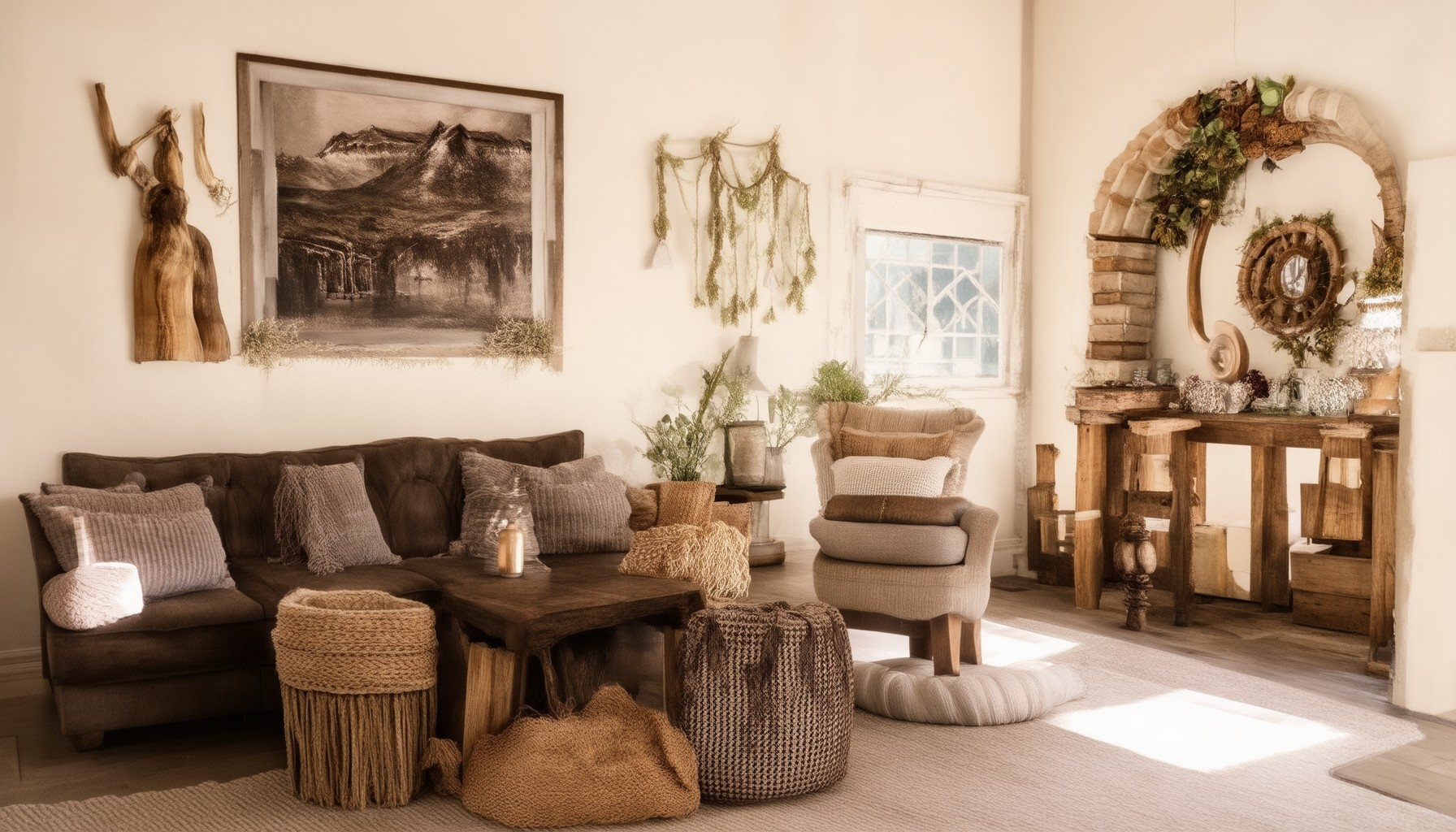



0 Comments